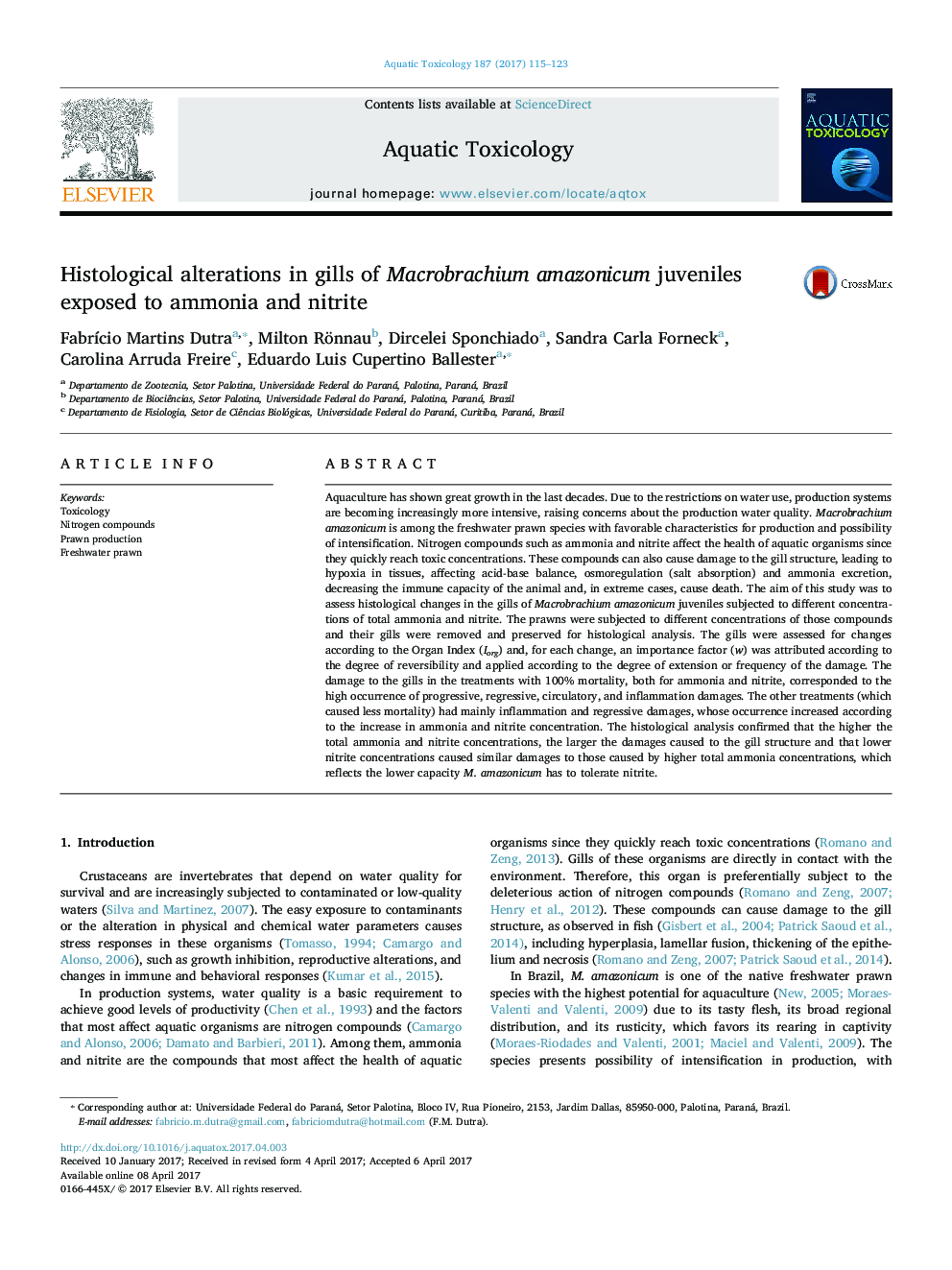| کد مقاله | کد نشریه | سال انتشار | مقاله انگلیسی | نسخه تمام متن |
|---|---|---|---|---|
| 5764302 | 1625918 | 2017 | 9 صفحه PDF | دانلود رایگان |

- The organ index showed to be a robust tool in the evaluation of gill damage.
- Damage progress occurs mainly at high concentrations of nitrite and total ammonia.
- The nitrite tends to cause greater damage to gill structure than ammonia.
Aquaculture has shown great growth in the last decades. Due to the restrictions on water use, production systems are becoming increasingly more intensive, raising concerns about the production water quality. Macrobrachium amazonicum is among the freshwater prawn species with favorable characteristics for production and possibility of intensification. Nitrogen compounds such as ammonia and nitrite affect the health of aquatic organisms since they quickly reach toxic concentrations. These compounds can also cause damage to the gill structure, leading to hypoxia in tissues, affecting acid-base balance, osmoregulation (salt absorption) and ammonia excretion, decreasing the immune capacity of the animal and, in extreme cases, cause death. The aim of this study was to assess histological changes in the gills of Macrobrachium amazonicum juveniles subjected to different concentrations of total ammonia and nitrite. The prawns were subjected to different concentrations of those compounds and their gills were removed and preserved for histological analysis. The gills were assessed for changes according to the Organ Index (Iorg) and, for each change, an importance factor (w) was attributed according to the degree of reversibility and applied according to the degree of extension or frequency of the damage. The damage to the gills in the treatments with 100% mortality, both for ammonia and nitrite, corresponded to the high occurrence of progressive, regressive, circulatory, and inflammation damages. The other treatments (which caused less mortality) had mainly inflammation and regressive damages, whose occurrence increased according to the increase in ammonia and nitrite concentration. The histological analysis confirmed that the higher the total ammonia and nitrite concentrations, the larger the damages caused to the gill structure and that lower nitrite concentrations caused similar damages to those caused by higher total ammonia concentrations, which reflects the lower capacity M. amazonicum has to tolerate nitrite.
Journal: Aquatic Toxicology - Volume 187, June 2017, Pages 115-123